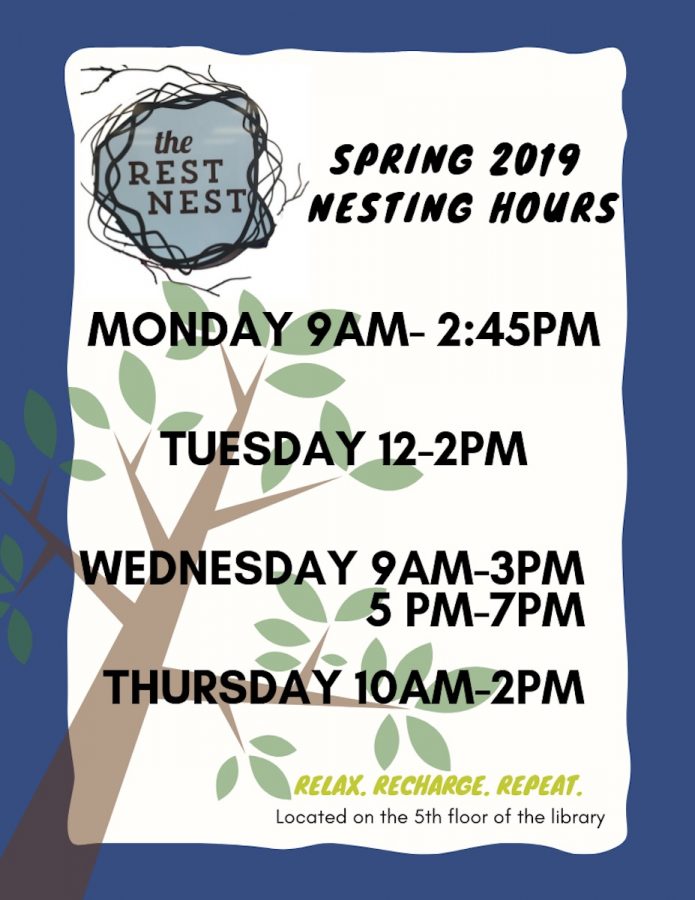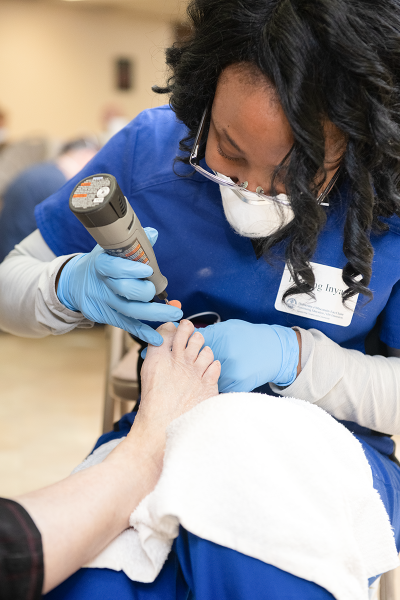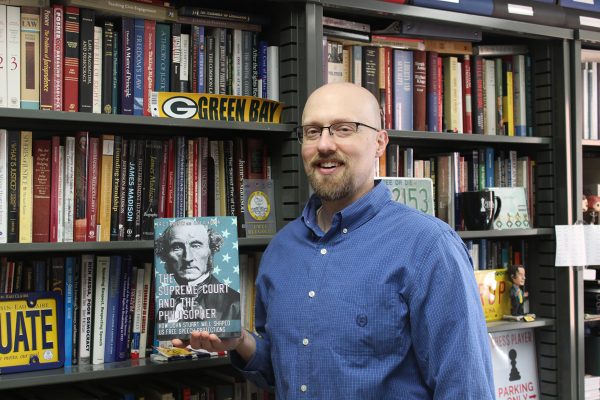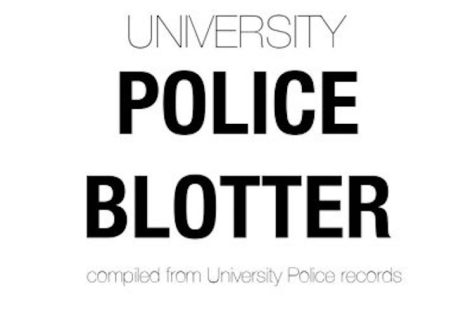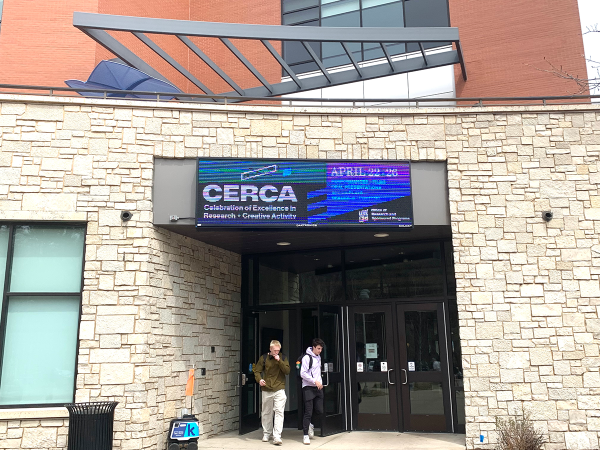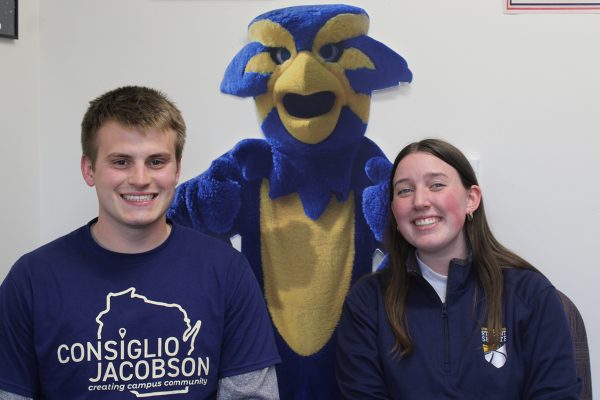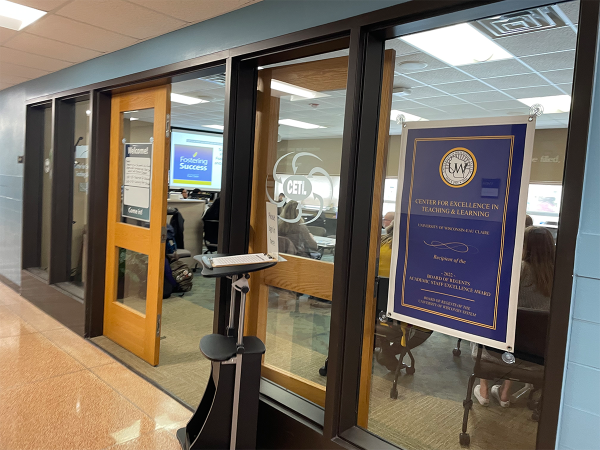Life Savers educate campus about suicide, mental health
Students and faculty work to combat the stigma associated with mental illness
Photo by SUBMITTED
The Rest Nest is on the fifth floor of the McIntyre Library. Two student-workers are present to provide an ear to listen.
UW-Eau Claire Student Health Educator Christina Prust gave an educational talk about suicide prevention and mental health in a resident hall last semester. During the presentation, Prust and her fellow presenters handed out a “Care Card,” a card that lists the signs that someone may be suffering from depression.
Weeks later, Prust heard from a Resident Assistant just how helpful the card came to be.
“A student said to the RA, ‘I got that card and it had the warning signs on there and I realized one of my friends was exhibiting these kinds of signs,’” Prust said. “And she went on to ask her friend, ‘What’s up, are you ok?’ And it turned out the friend wasn’t, and they together were able to get the friend the help and they’re now going to counseling. That’s exactly what the program is intended for.”
The program Prust mentions is the Suicide Prevention and Research Collaborative, also known as SPARC.
The program was established in 2013 by UW-Eau Claire psychology professor Jennifer Muehlenkamp, who felt impacted by the number of students who came to her struggling with anxiety and depression. SPARC received a three-year grant for just over 304,000 dollars from the Substance Abuse and Mental Health Services Administration. The money goes toward helping the campus community recognize signs of suicide, depression and anxiety in students.
SPARC functions as an educational resource for professors and students on campus. A group of students, called Life Savers, present information about suicide and mental health to classes. Each presentation is about 50 minutes long. Since she started working with SPARC, Prust estimates that one-thousand students have heard the Life Savers’ message.
Jordan Valsek is a second-year communication and psychology student. She also works as a Life Saver. She said being a part of SPARC has helped her develop skills she might need in her future career.
“You really feel amazing after you give your presentation and you just educate everyone about suicide prevention,” Valsek said, “because honestly you don’t get this kind of training and you don’t get this kind of information on the daily. There’s just nothing like this program and it’s really cool and I’m happy to be a part of it.”
SPARC works with other programs on campus to address the intersectionality of mental health. Prust said the organization is present at event thrown by the Gender and Sexuality Resource Center and the Office of Multicultural Affairs. SPARC has handouts about how to be a good ally to the LGBTQ community. All handouts include LGBTQ-specific mental health resources.
Lauren Longhenry, a fourth-year CSD student, is another Life Saver. She said she was motivated to join the program because she’s been impacted by mental health.
“I personally have, and I would say a majority of people are,” Longhenry said. “We begin our presentation by saying 60 percent of individuals in their lifetime will be impacted by suicide. So, I have and, not so much suicide but mental health if you will.”
Prust said there is a reason why students are Life Savers, not faculty or staff.
“We like to do that peer-to-peer because it’s students presenting to students because it’s a different type of relationship than faculty or staff,” Prust said. “And we know that students go to their peers first, they usually don’t go to a parent or their professor or an adult in general.”
The organization also created the Rest Nest, a nook on the fifth floor of McIntyre Library. It is a space for students to come rest and destress. Two trained student-workers are always present in case anyone needs an ear to listen.
The room has floor to ceiling windows that overlook the Chippewa River. String lights line the panes and give the room a warm glow. Students can be found napping on a bean bag chairs or sprawled on loungers. Colored pencil drawings hang lopsided on the walls.
Prust said there are barriers in place for those seeking help with their mental health. She says the best way to overcome the stigma of mental health is to talk about it.
“I think that a lot of people don’t understand what mental illness is,” Prust said. “It’s a legitimate disease like any other disease, like cancer or diabetes. It’s not a person’s fault when they get it, they’re not weak that they have a mental illness. And they’re not weak when they get help.”
Bright green bandanas are available for students who want to show their support for the de-stigmatization of mental illnesses. Prust said people can tie the bandanas to their bags or clothing.
Longhenry said she hopes her work with SPARC inspires others to start conversations about mental health, even if the topic can be difficult to discuss.
“For me, what I really love about giving these presentations is showing that suicide really does affect all of us, no matter how,” Prust said, “and just getting into that mindset that it is a scary situation, but it doesn’t have to be. There are things we can do to help one another, and it really goes into this big idea of civility — we need to help one another, and when we do that it really does make a difference.”
If you know someone who is struggling, please call the suicide prevention hotline at 1-800-273-8255 or text “Hopeline” to 741-741.
Neupert can be reached at [email protected].
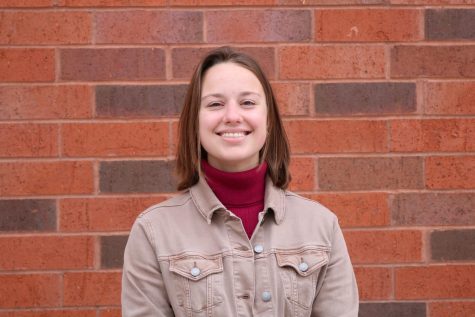
Neupert is a fourth-year journalism student at UW-Eau Claire. She is the executive producer of Engage Eau Claire on Blugold Radio Sunday. In her spare time, Neupert's working on becoming a crossword puzzle expert.

